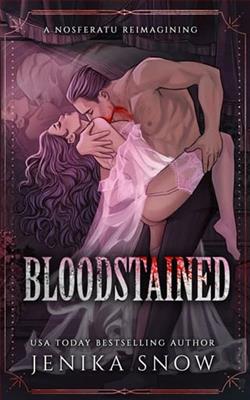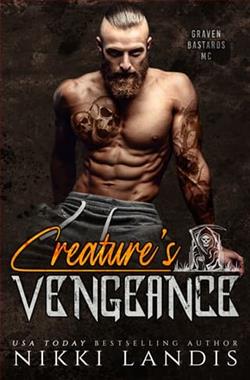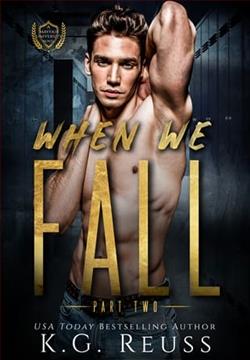Page 141 of T is for Trespass (Kinsey Millhone 20)
Once again, my nerves were on edge. I pressed Lonnie about getting the judge’s order signed so I could have my guns back in my possession. I don’t know how he did it, but I had the order in hand and retrieved them from the gun shop that afternoon. I didn’t picture myself walking around like a gunslinger, armed to the teeth, but I had to do something to make myself feel safe.
Wednesday morning when I returned from my run, there was a photograph taped to my front door. Solana again. What now? Frowning, I pulled it free. I let myself in, locked the door behind me, and turned on the desk lamp. I studied the image, knowing what it was. She’d snapped a picture of me the day before somewhere along my jogging route. I recognized the dark blue sweats I’d worn. It had been nippy out and I’d wrapped a lime green scarf around my neck, the first and only time. It must have been late in the run because my face was flushed and I was breathing through my mouth. In the background, I could see part of a building with a streetlamp in front. The angle was odd, but I couldn’t think what that meant. The message was clear enough. Even the run, which had been my salvation, was under siege. I sat down on the couch and put a hand over my mouth. My fingers were cold and I found myself shaking my head. I couldn’t live this way. I couldn’t spend the rest of my life on red alert. I stared at the photo and another thought occurred to me. She wanted me to find her. She was showing me where she was, but she wouldn’t make it easy. Being sly was her way of maintaining the upper hand. Wherever she was, all she had to do was wait while I was forced to do the legwork. The challenge was to see if I was smart enough to track her down. If not, she’d send me another clue. What I couldn’t “get” was her game plan. She had something in mind, but I couldn’t read her well enough to figure out what it was. It was an interesting display of power. I had more at stake than she did, but she had nothing to lose.
I showered and dressed in sweats and running shoes. For breakfast, I ate cold cereal. I washed the bowl and spoon and set them in the rack to dry. I went upstairs and took out my fanny pack. I left the key picks in their compact leather folder but removed the pick gun to make room for the H amp;K, which I loaded and tucked in its place. I left the house with Solana’s photo of me in hand. The other snapshots I carried were of her. I walked my route-down Cabana, left on State. I kept an eye on the passing landscape, trying to identify the point from which the photo had been taken. It looked like the eye of the camera was angled downward, but not by much. If she’d been out in the open, I would have seen her. During a run, I keep my focus on the run itself, but not to the exclusion of all else. I was usually out before the sun came up, and as empty as the streets appeared to be, there were always other people about and not all of them good. I was interested in being fit, but not at the cost of being foolish.
I was torn between a natural desire to be thorough and a need to get to the point. I compromised by walking half the route. My hunch was that her location was on the beach side of the freeway. The buildings along the upper part of State had a very different look to them than the one in the photograph. I’d taken this route for weeks and it surprised me how different the streets looked when I traveled at a walking pace. Retail stores were still closed, but the popular sidewalk cafés were filled. People were heading off to the gym or returning to their cars, damp from their workouts.
At the intersection of Neil and State, I turned and retraced my steps. It helped that there weren’t that many lampposts-two to every block. I scanned the buildings as high as the second floor, checking fire escapes and balconies where she might have hidden. I looked for windows located at a level that would reproduce the angle from which the snapshot had been taken. I’d almost reached the railroad tracks by then and I was running short of geography. It was the section of building she’d caught in the frame that finally tipped me off. It was the T-shirt shop across the street. The skirting beneath the plate-glass window was quite distinct now that I looked at it. Slowly I walked on until the slice of background matched the picture. Then I turned and looked behind me. The Paramount Hotel.
I checked the window visible just above the marquee. It was a corner room, probably large because I could see a deep balcony that wrapped around both sides of the building at that point. Maybe the original hotel had had a restaurant up there, with French doors that opened onto the balcony so patrons could enjoy the morning air at breakfast and, later, the setting sun at the cocktail hour.
I went into the lobby through the front doors. The remodel had been done with an impeccable eye for detail. The architect had managed to capture the old glamour without sacrificing current standards of elegance. It looked like all the old brass fixtures were still in place, burnished to a high shine. I knew this to be untrue as the originals had been looted in the days just after the hotel closed. Murals in muted tones covered the walls, with scenes depicting the fashionable set in residence at the Paramount Hotel in the 1940s. The doorman was on hand, as well as numerous bellhops toting luggage for the patrons checking in. A party of rail-thin women in jaunty hats played a hand of bridge in one corner of the lobby. Two of the four had foxtail furs tossed over their suit jackets with the big shoulder pads. There was no hint that a war was going on except for the scarcity of men. The patio and pool area had been brushed in, the images lifted from old photographs. I could see six cabanas on the far side of the pool, which was flanked with ponytail palms and the larger, more graceful queen palms. What I hadn’t realized, peering at the construction through the barrier, was that the pool extended under a glass wall into the lobby itself. The lobby portion was largely decorative, but the overall effect was nice. In the mural there were vintage automobiles parked at the street and no hint of the various tourist-oriented businesses that now stretched along State. Just to the right, there was a wide carpeted stair in trompe l’oeil curving up to the mezzanine. I turned and saw the same stairway in reality.







